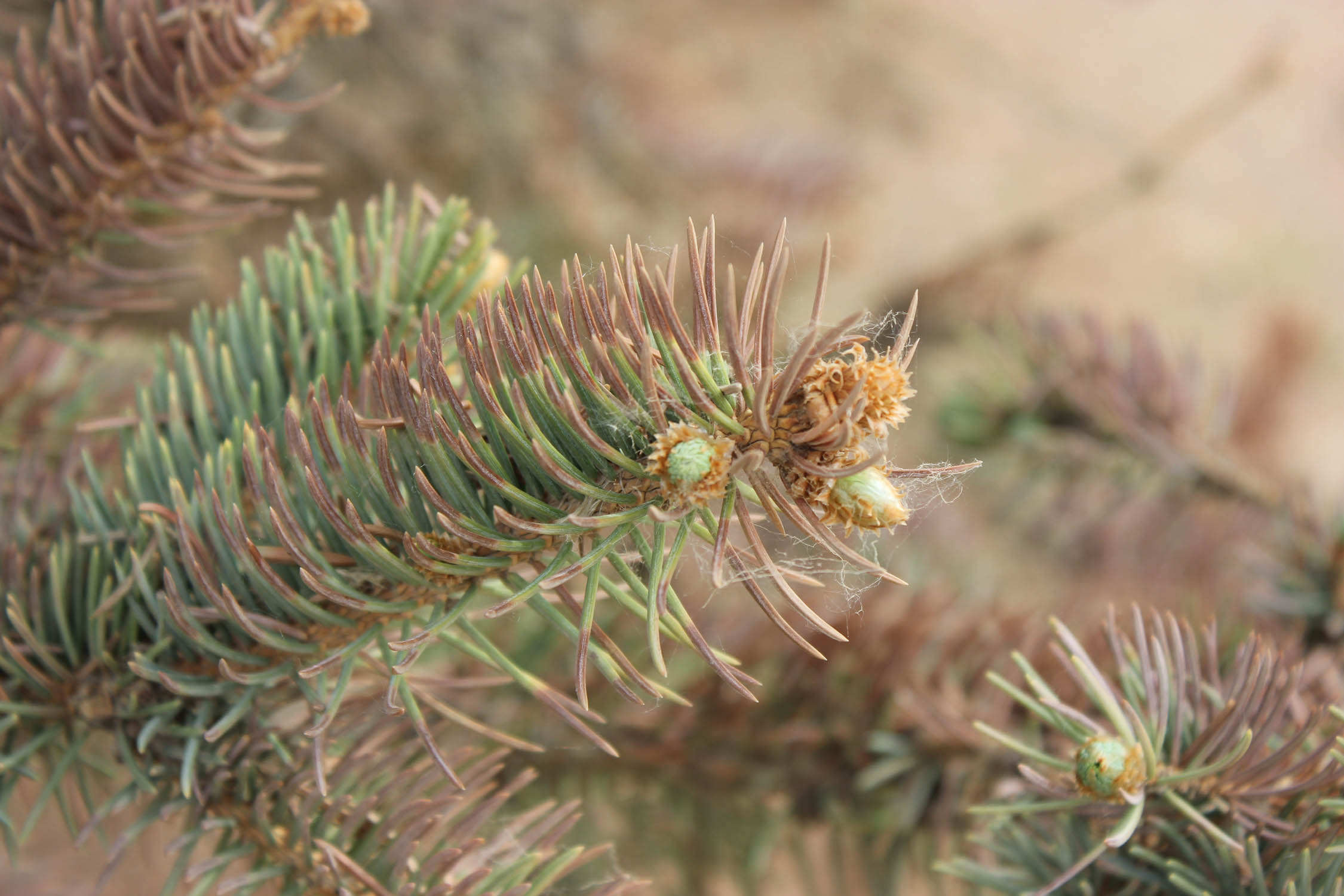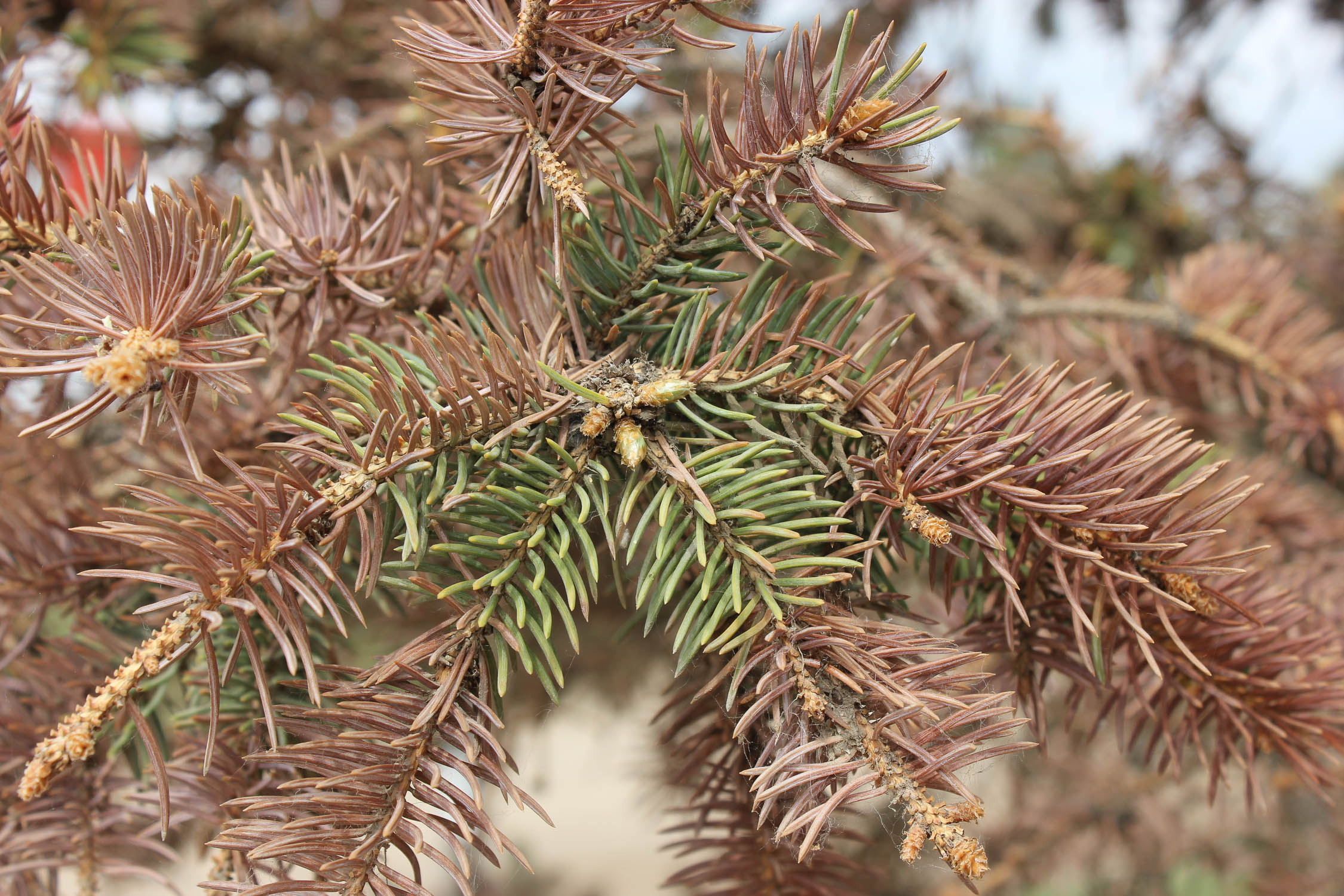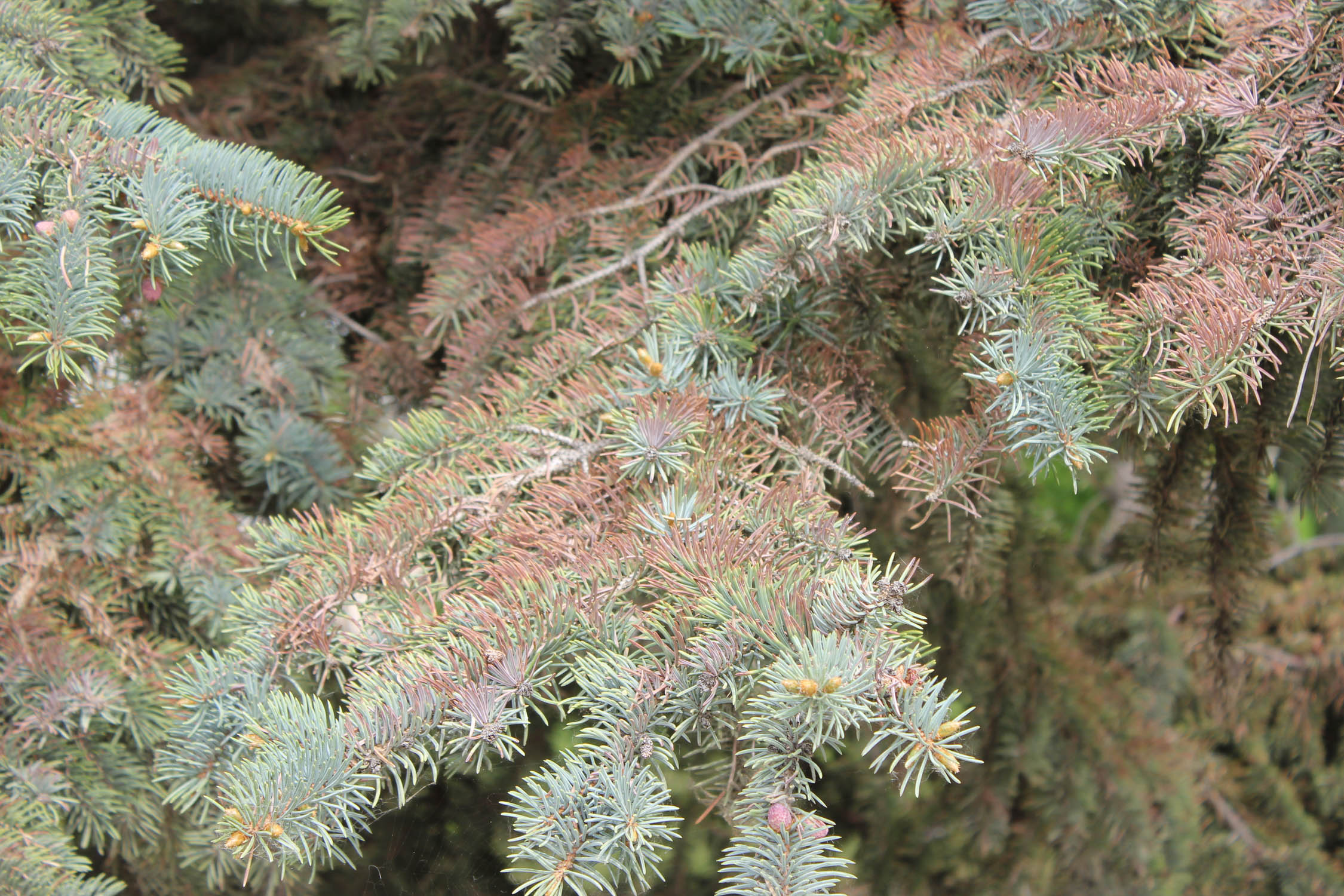
Why is my evergreen turning brown and losing needles?
Normal to problematic
In spite of being called ‘evergreens’, coniferous trees don’t keep their needles forever. Our local coniferous trees and shrubs include spruce, pine, fir larch, cedar and juniper. The loss of needles on conifers in the fall is normal and natural. This is when coniferous trees shed their oldest needles, the ones located closest to the trunk. This is called seasonal needle loss. The needles turn yellow or brown first, before dropping to the ground. If you take a peek, older evergreens don’t have much in the way of needles in the inside of the tree. Every year a conifer will grow a new set of needles and every year it will lose an old set of needles. A sign that your tree is healthy is when there is new growth in spring at the tips of the branches. No new growth on the tips of the branches indicates the branch or tree is in major trouble.
Needles in coniferous trees have a lifespan which varies depending on the species. Pines, such as white pine or scots pine retain their needles for two to three years, while spruce hold on to their needles for three to five years. In cedars, it’s normal for older branchlets to turn brown. These may stay on the plant for some time before falling off.
The exception is tamarack or larch. While these are coniferous trees, they lose all of their needles in the fall and re-grow fresh needles every spring.
Sometimes needle drop is extreme. What is the cause?
If you think that needle drop in your tree is excessive, and there is no sign of insect or disease problems, then environmental stresses are likely the cause. Extreme needle drop is often the first symptom. Stress symptoms may not appear for two to five years after the stress occurred. For example, if the area flooded around the tree three or four years ago, the damage may not fully show up until this spring.
When a tree exhibits symptoms in its branches or needles, it usually indicates a problem with the root system, specifically the tiny root hairs that are responsible for obtaining water and nutrients. Once a tree is stressed or weakened, it will be vulnerable to insect or diseases. Extreme stress, especially when it damages the root system leads to general decline in trees.
|
Source of stress |
Effect on tree |
|
Adverse temperatures such as extreme winter cold; fluctuating above and below freezing temperatures in mid-winter; and extreme heat in summer. |
Winterkill, delayed winter injury, heat stress may cause damage to the cambian layer just beneath the bark. This damage interferes with the uptake of water and nutrients. |
|
Drought. |
Lack of water damages or kills back some of the root system, in particular the tiny and sensitive root hairs. |
|
Flooding, including: -overland flooding from extreme weather events, -a high water table, -changes to drainage (sump pump outlet or downspout directed at the root zone), -nearby dugouts or sloughs that are full or overflowing |
Prolonged exposure to standing water causes damage to the root hairs of the trees – these are specialized, very fine roots which are responsible for water, nutrient and oxygen uptake in the trees. When these roots are damaged, the trees are not able to pick up enough oxygen which is needed for photosynthesis. This causes the trees to be stressed and the needles to die out much faster than normal. |
|
Salinity caused by high water table, sidewalk salts, road salts, nearby dugouts or sloughs. |
Water in the soil that has a high concentration of soluble salts is said to be saline and causes salinity. The salts in the water is toxic to trees, shrubs and other plants. |
|
Soil compaction from construction or heavy equipment; or when trees outgrow a space confined by sidewalks, houses or driveways.
|
Fifty percent of soil is generally minerals and other materials, 25% is water and 25% is air space. Compacted soil has very low air spaces. Roots need these spaces for the uptake of water, oxygen and nutrients. Compacted soil also tends to stay wet which causes root rot. |
|
Trees that are planted improperly. (See https://gardening.usask.ca/articles-trees/planting-practices-that-harm-trees-and-shrubs.php) |
Most common effect is root girdling which leads to the death of the plant. Same with planting too deep or anything that interferes with or constricts the bark. All of these things interfere with the uptake of water, oxygen and nutrients. |
|
Planting the wrong tree for the existing site conditions. |
For example, Colorado Blue Spruce are very sensitive to prolonged exposure to standing water, a leading cause of water stress leading to extreme needle drop. They do best in soils that drain quickly. If your site tends to be wet, try white spruce (Picea glauca). These are native to the northern boreal forest and naturally grow near streams and rivers. |
Note that not all conifers respond the same way to environmental stress. For example, white spruce is native to Saskatchewan and are found throughout the northern parts of the province or near lakes, rivers and streams in the southern part of the province. Jack pines, the least ornamental of the pines, is native to the norther parts of Saskatchewan. Both white spruce and jack pines prefer a moist environment.
On the other hand, Colorado spruce and ponderosa pines are native to the side of a mountain where it is dry with sharp drainage. They are very sensitive to excessively wet soils.
So, will trees with extreme needle drop symptoms survive?
It depends on the cause of the problem and the severity of the symptoms.
For example, if water stress caused by flooding is the cause, the tree may recover provided that there are no large, repeated, long term rain events this year. It may be worth watching the tree for a while – if the buds are alive and new growth occurs, there is some hope. The tiny root hairs will regenerate fairly quickly and the tree will do better if things dry out in the summer.
Similarly, if drought has caused the problem, water your evergreen deeply every week or two at the dripline which is where most of the tiny root hairs are found.
If trees are also showing signs of insect or disease and have few needles, it may not be worth treating if the plant is in severe decline.





